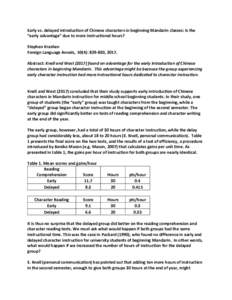<--- Back to Details
| First Page | Document Content | |
|---|---|---|
 Date: 2012-05-02 11:49:33Metaphysics Chinese characters Languages of East Asia Linguistics Calligraphy Korean language Ordering Orthography Stroke order Stroke Concept learning Drawer |
Add to Reading List |
 Concept learning as motor program induction: A large-scale empirical study Brenden M. Lake Ruslan Salakhutdinov Joshua B. Tenenbaum
Concept learning as motor program induction: A large-scale empirical study Brenden M. Lake Ruslan Salakhutdinov Joshua B. Tenenbaum


